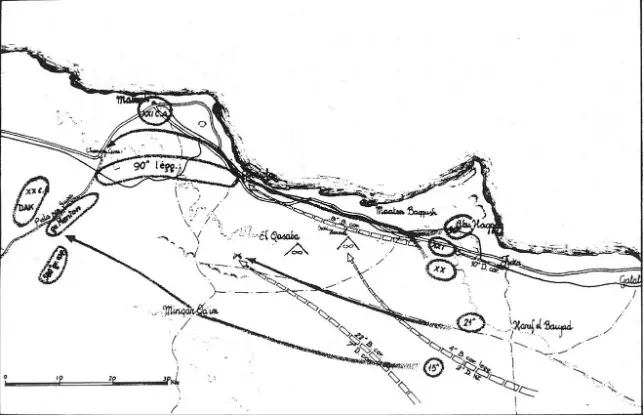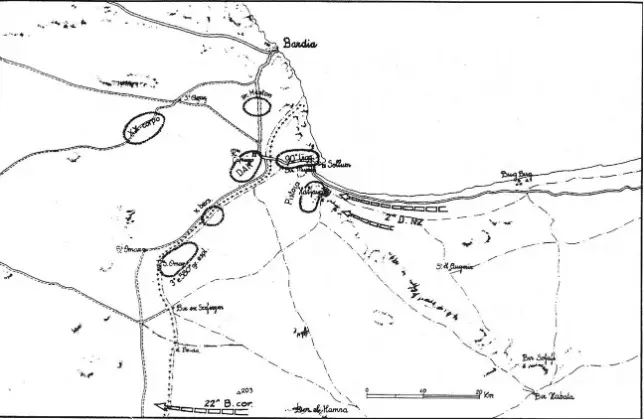
After the big battle of El Alamein, the remnants of Rommel’s forces began a long retreat across Egypt and Libya that brought them straight to Tunisia, constantly chased by the British 8th Army
The end of the big battle
On the 2nd of November 1942, the British 8th Army launched Operation Supercharge, the final act that sealed the big battle of El Alamein. Between the 3rd and 4th of November, Axis forces had begun their retreat, while some units, most notably the Italian armored division “Ariete” fought a desperate rear-guard action aimed at delaying the advancing tanks of the 8th Army.
The remnants of Rommel’s army moved towards the fallback line near Fuka. On the 5th of November, the situation near Fuka was the following.
- The 90° light division was the only still combat-worthy unit, shielding all the other retreating forces
- The Italian XX corps, previously made up of the divisions Ariete, Littorio and Trieste, could rely on 12 tanks, four companies of Bersaglieri, two infantry battalions and a handful of artillery pieces
- The 21st Panzer division had 30 tanks, 400 men, 16 antitank guns, and 25 artillery pieces.
- The 15th Panzer had 8 tanks, 200 men, 4 antitank guns and 16 artillery pieces
- The Italian XXI corps was down to 3 battalions and an artillery group. The Trento division had been mostly wiped out in fights of the northern sector while the bulk of the Bologna division was still retreating on foot amid the desert.
- The 164th German division, which had intensively fought alongside the Trento, was down to 600 men.
The Italian X corps never made it to the new line. The surviving infantry of the divisions Pavia, Brescia and Folgore were doomed by a long march on foot through the desert. Suffering the same fate as their comrades from the Bologna. In the following days, they were all surrounded and captured by the 8th Army.

Figure 1 The retreat from Fuka to Matruh
The retreat goes on
With the mobile units of the 8th Army in pursuit, Rommel realized that it was not possible to station too long at Fuka. He then ordered to continue the retreat towards Marsa Matruh. on the 6th of November. During this phase, the 22° British armored brigade made contact with the retreating 21st Panzer and inflicted severe losses before the Germans could proceed towards Matruh. Also, this next stop was a temporary one. On the 7th of November, Rommel resumed his retreat, in time to link up with the survivors of the Ramcke brigade and of the XXXI Italian assault engineers battalion, two units that had escaped the encirclement of the X corps.
The 8th Army occupied Matruh in the night between the 7th and 8th of November while the Axis forces proceeded towards the old border between Egypt and Libya. Here, they were supposed to meet up with two Italian divisions (“Giovani Fascisti” and “Pistoia”) which had not been engaged in the fights of El Alamein and were relatively “fresh”. The Italian supreme command wanted to halt the retreat and set a strong defensive line in the area Sollum-Halfaya but Rommel was quite sceptical of this possibility and was already thinking about an “African Dunkerque” to save his veterans from the inevitable defeat. News of Operation Torch unfolding in french-controlled Algeria and Morocco made the situation even worse.

Figure 2 The positions at the border (10/11/1942)
The “Giovani Fascisti” division had not arrived yet, thus Rommel ordered its commander to proceed towards El Agheila through internal roads and trails. Rommel’s exhausted troops remained in the area between Sollum and Bardia until the 11th of November when they once again began their retreating movement. Marshal Cavallero, the Italian chief of general staff, was furious that the defense of the border was not even attempted.
The retreat went on and Rommel manage to avoid contact with the chasing units of the 8th Army, which entered Tobruk on the 13th of November and Benghazi on the 20th.
Battle of the El Agheila line
On the 24th of November, the Axis forces reached the defensive line of El Agheila, they had marched 1,000 kilometers in 18 days. Here they finally linked up with the “Giovani Fascisti” division and with the “Spezia” division, which had arrived from Italy. However, new plans for another retreating movement were on the way. On the 12th of December, the 2° New Zealand division, the 51°Highland division and the 7°armored division launched their assault against the El Agheila line.
The Axis forces had begun their retreating movement, starting with the slow Italian Infantry divisions. The forces of the 8th army then clashed with mostly German units (90° and 21° divisions) fighting the rear-guard action. While the 7°armoured division tried to encircle the German 90°, the remnants of the Italian XX corps, organized as the “Cantaluppi” tactical group, clashed with the British armored units and delayed their advance in time to save the German division.
By the 17th of December, the axis forces had disengaged and proceeded their race westwards. They will end their retreat in southern Tunisia on the Mareth line, an old french fortified line built before the war for defending against the Italians. By early February, all Italian and German forces had abandoned Libya and the Tunisia campaign was about to enter its most intense phase.
Sources
Montanari, M. (1989). Le operazioni in Africa settentrionale, Volume IV: Enfidaville (Parte prima). Roma: Ufficio storico dello stato maggiore dell’esercito.
Santangelo, A. (2020). La battaglia di El Alamein. Il Mulino.